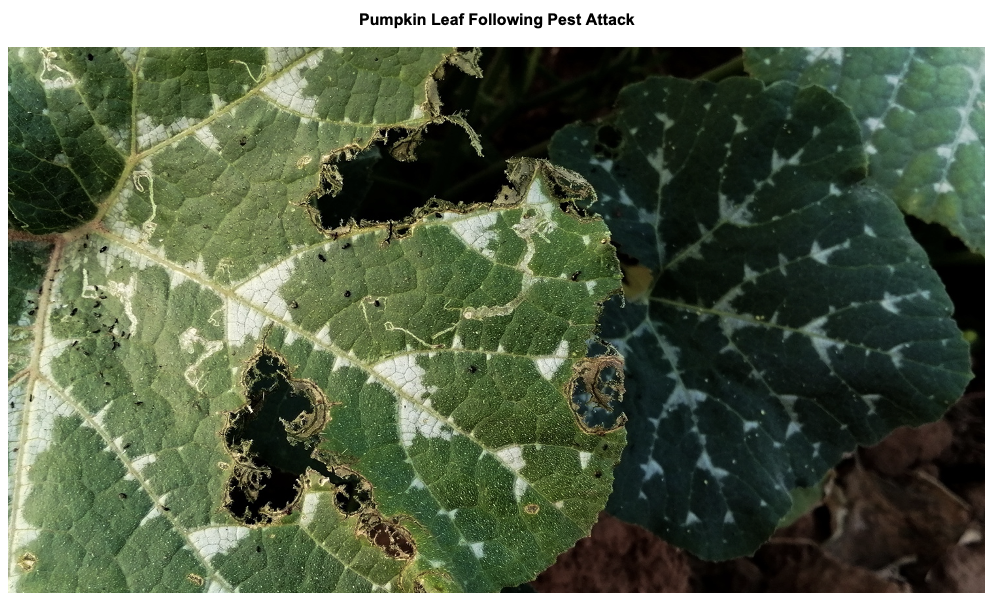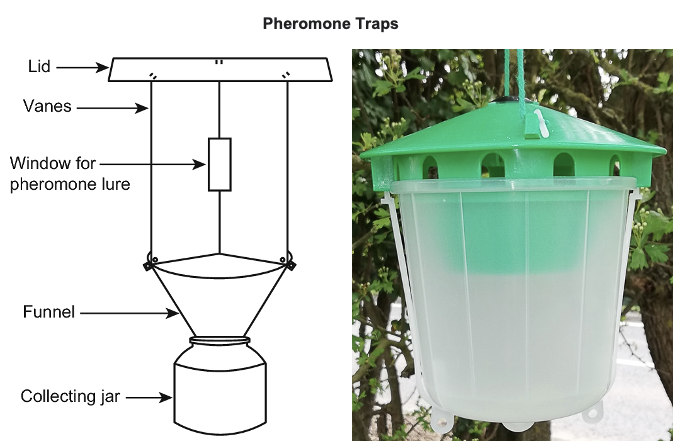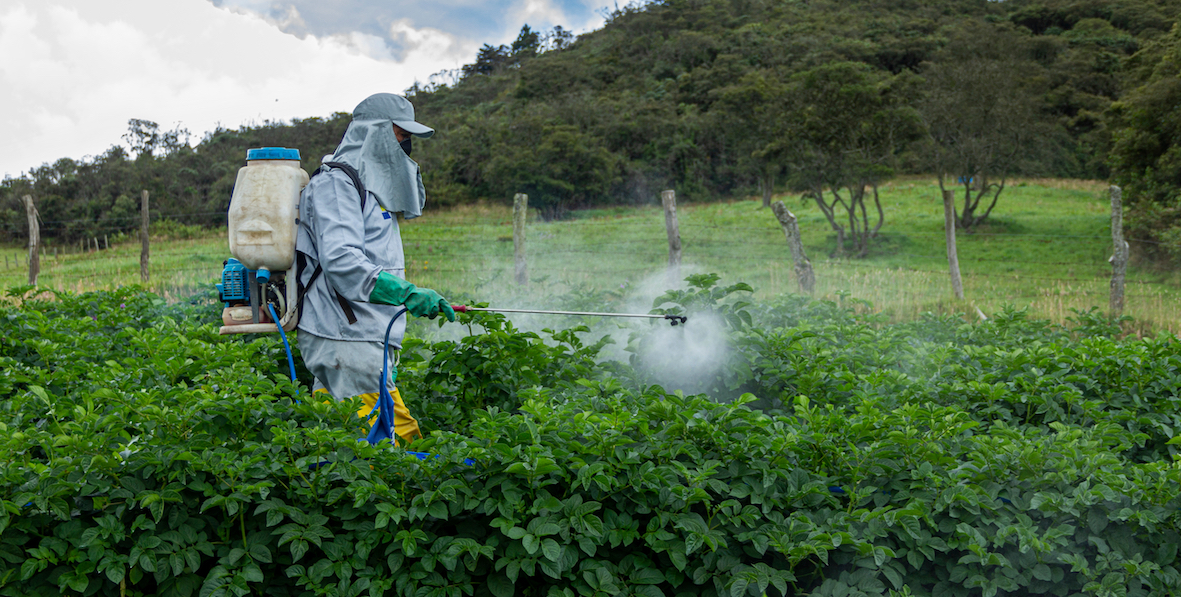- Last time, we demonstrated that there are plausible alternatives to most toxic insecticides.
- You can use safer versions of introduce eradicating fungi or insects.
- This comes under the umbrella of Integrated Pest Management (IPM).
A Framework for Integrated Pest Management (IPM)
There are several steps in the design and implementation of an IPM system.
1. Determining Actionable Thresholds
A few pests in a field aren’t going to be a problem so long as monitoring is carried out (see next step).
It’s therefore important to determine the population of undesirable species and/or environmental conditions accelerating their rapid multiplication reach a point called the ‘economic threshold’. At this point, the pest population will cause more damage than the cost of controlling it.
In some cases action, will have to take place before the pest population has started multiplying and based on predictions of weather, climate, soil types, etc.
Crops can often, to some degree, recover from pest attacks and also the price of the end produce at market can fluctuate significantly so the threshold is not static.

2. Prevention
There are many actions that can be taken to avoid reaching the economic threshold.
In the previous article, we discussed such methods for Potato Cyst Nematode (PCN), including selection of nematode free seed and selecting resistant varieties, preventative life cycle disruption of the pest and many cultural methods.
Prevention also includes protecting and encouraging predators of the pest.
3. Monitoring
This can be as simple as visual identification of a pest to using monitoring devices.
Visual identification should use a precise measurement such as percentage of plants infected and severity of fungal disease, number of insects per plant, or plant count of a weed per square metre (level of infestation) and growth stage.
Some other monitoring tools include pheromone moth traps (see below) and mobile apps that can help identify a pest and use sophisticated algorithms based on location and weather to predict an outbreak.
These tools are readily available and affordable, even in some of the poorest countries.
4. Take Action
The best IPM approach is to consider all the possible tools available: mechanical, biological, manual and the use of agrochemicals (if not organic production) and select the most appropriate.
Combinations of different methods can be used and timing is critical.
It’s also important, but perhaps counterintuitive, to recognize (particularly in the case of insects) that we’re not trying to completely eradicate the pest.
A balance must be kept with low numbers of the pest and the predator, otherwise the predator will have no food source and will die out, making a new re-colonizing wave of the pest more devastating. Predators include ants, wasps, earwigs, birds and small mammals.
Two ways to achieve this balance are to have plants that are beneficial to predators as refuge areas at the field margins, or deliberately leave a part of the field unsprayed for the pest to survive.
In reality, many insecticides are likely to have deleterious effects on the predators as well as the pest, although their ability of both to recover is a marvel of nature.

Another possibility is to use methods that keep predators away from danger; an obvious one being seed treatment.
Finally, biological controls, as they become more available are a part of the mix.
Case Study: Maize (Corn)
Fall Armyworm (FAW) is a devastating pest. It’s native to warmer areas of North and South America but has now spread to Africa and Asia. It doesn’t just attack maize and is perfectly at home on 80 other crops, including wheat, cotton and, to a much lesser extent, rice.
Using the four steps discussed above, here are some possible solutions:
1. Determine Actionable Thresholds
This will vary according to the farm, the price of maize and risk factors, such as the time of planting (the later the planting, the greater the risk). The ability to achieve optimum pesticide timing (if used) depending on climatic conditions is also relevant.
In other words, the actionable threshold is not static and should be re-visited during the growing season.
A good rule of thumb for maize can be found in Table 1.

2. Prevention
Some authors prefer to put this step ahead of actionable thresholds because it should be a continual and ongoing measure, sometimes over a period of years.
The aim here is to not get to the threshold or at least reduce the quantity of insecticides used.
Cultural, mechanical and biological methods have all proven effective. Genetic Resistance is more difficult to achieve, although some types of sweet corn do show this.
Sound cultural methods include using zero/no-till and residue retention, crop rotation and cover crops or inter-row beneficial plants are all known to be effective in encouraging natural FAW predators (spiders, ants and beetles).
Equally, if there’s a potential FAW attack from neighbouring fields, a barrier insecticide on the field margins may be all that’s required.
Choosing seeds with natural vigour or using other methods to encourage vigour is useful. The use of GM for FAW control has been somewhat promising. Br Corn varieties expressing Bacillus thuringiensis proteins have proven effective in China, but in Brazil, FAW resistance appeared only after three years of introduction. There are new GM traits in development for FAW.
3. Monitoring
Monitoring should encompass the chosen actionable thresholds in Table 1.
It’s important to note that there are some pitfalls in relation to carrying out the correct number of samples and areas in scouting.
Equally, there are rules governing the effective use of pheromone traps. The traps contain ‘lures’, which are synthetic FAW female pheromones and attract the male moths that are then exposed to an insecticide on a tape, die and drop into the bucket.

Common mistakes are not continually elevating the traps so they are always above the crop or placing them near wooded areas and hedges, habitats that may not be conducive to the moths.
4. Take Action
It’s only at this point that an insecticide at the optimum timing should be chosen if necessary and all other methods have been exhausted. Great care should be taken to select the insecticide that’ll do the least damage to FAW predators.
All in all, there are plenty of opportunities to reduce pesticide usage and IPM is an important tool within SIA.

Other Opinions You May Be Interested In…

